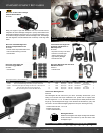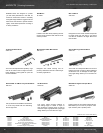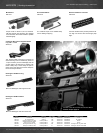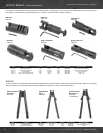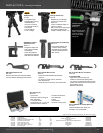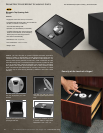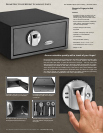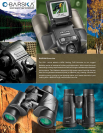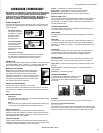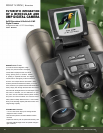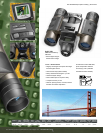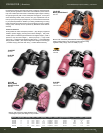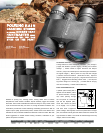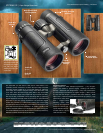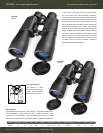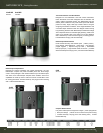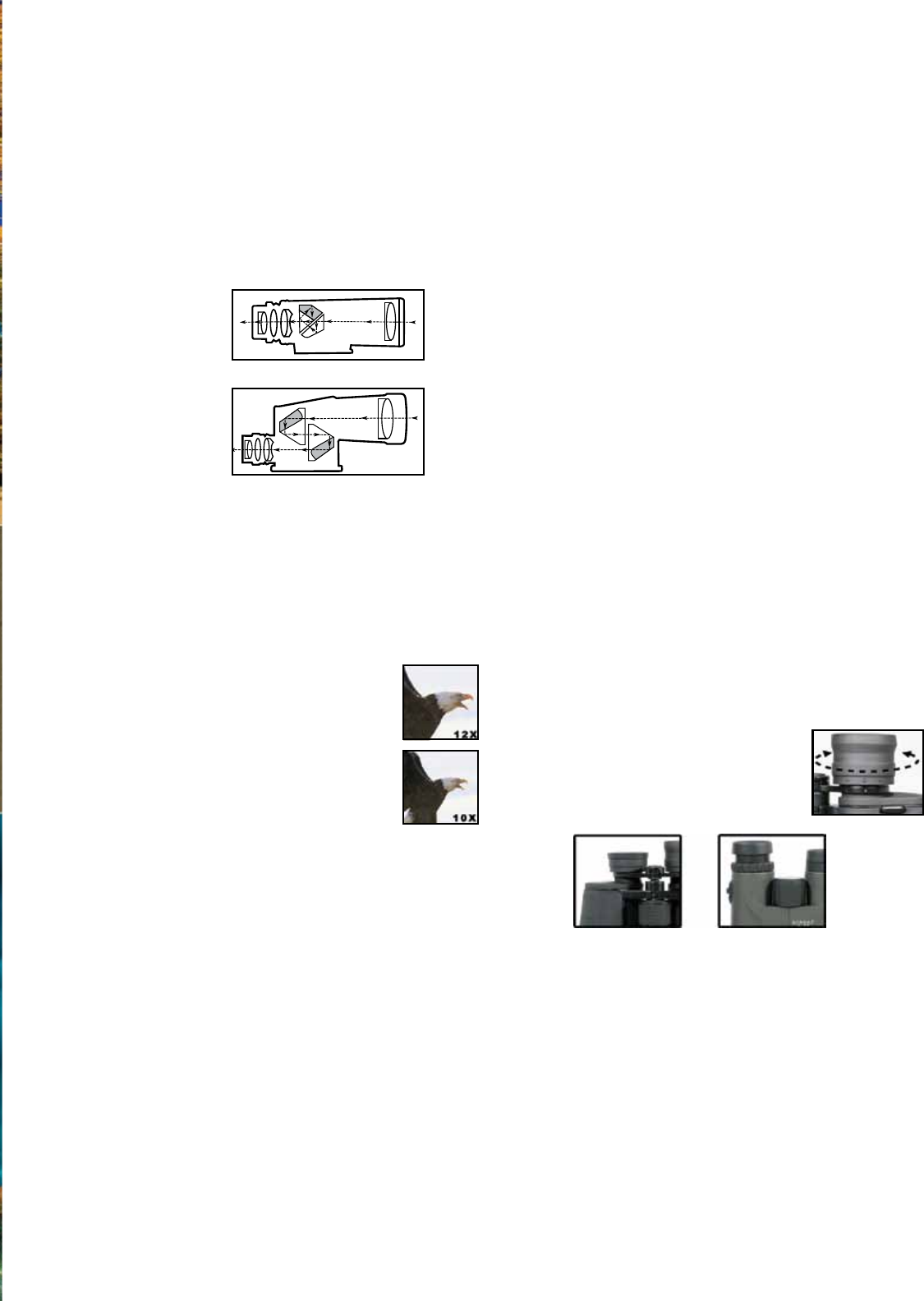
PRISM SYSTEM/TYPE
The prism system of a binocular reduces the size of a long optical path
and correct an inverted image. There are three most common types of
prism construction.
Roof Prism System
The prisms overlap and
are aligned in a straight
line with the lenses
allowing to have a
slim construction.
Porro Prism System
The objective is offset
from the eyepiece
offering greater depth
perception and a wider
eld of view.
Reverse Porro System
The objectives are offset from the eyepiece in a horizontal
way reducing the total size of the construction by about
30% compared to the traditional porro prism system.
PRISM GLASS
The common standards of optical prisms are barium-crown (BAK-4) glass
or borosilicate (BK-7) glass. The BAK- 4 is a higher quality glass that
reduces light scattering, resulting in sharper and brighter images.
MAGNIFICATION (POWER)
Magnication is the number of times the object being
viewed is enlarged. Binoculars are often identied by
two numbers, for example: 10x50. The rst number
indicates the magnication or the power of the binocular,
expressed by the letter “x”, for times. This means that
the object being viewed appears to be 10 times closer
than would be seen with the naked eye.
OBJECTIVE LENS DIAMETER
The second number in the reference (i.e. 10X50)
indicates the diameter of the objective lens or the front lens. The larger
the objective lens, the better the light transmission, thus the brighter the
image.
BINOCULAR FEATURES
Wide Angle
Binoculars with a wider eld of view. This wide-angle feature is better
for capturing action or fast sports.
Zoom
Zoom binoculars have variable powers of magnication allowing you
to view closer in the distance without changing binoculars.
Waterproof/Fogproof
Waterproof binoculars are O-ring sealed for complete waterproof
protection to keep dry inside after immersion in water. Some binoculars
are also fogproof which means that they are nitrogen-purged to prevent
anti-fogging inside the optical surfaces.
OPTICAL COATINGS
Various coating processes on the lenses and prisms will determine the
brightness and the light gathering of a binocular, providing higher contrast
and brighter images. The different types of coating are:
Coated – A single layer on at least one lens surface
Fully Coated – A single layer on all air-to-glass lens surfaces
Multi-Coated – Multiple layers on at least one lens surface
Fully Multi-Coated – Multiple layers on all air-to- glass surfaces
FIELD OF VIEW ( F.O.V)
This is the side-to-side linear measurement of the of the circular eld seen
through a binocular. It is dened by the width in feet of the area visible
at 1000 yards, or in meters at 1000m. The higher the magnication, the
narrower the eld of view.
CLOSE FOCUS DISTANCE
The closest distance to the observed object that the binoculars can be
used while retaining a sharp focus.
RESOLUTION
The measurement of the binocular’s ability to distinguish ne detail and
sharpness.
EXIT PUPIL
This refers to the size of the small disc of light visible at the eyepiece of
a binocular. To determine the size of the exit pupil, divide the objective
diameter by the power: For example, a 10x50 binocular will have an exit
pupil of 5mm
EYE RELIEF
This is the distance a binocular can be held away from the human eye
and can still observe the entire eld of view. Long Eye Relief (LER)
reduces eyestrain and is more comfortable for eyeglass wearers.
FOCUS SYSTEM
The mechanism that is used to focus both barrels of a binocular on the
object being viewed. They are normally three types of focus systems.
Center Focus – Where the focusing knob is located in the center of the
binocular
Individual Focus – Where the focusing knob is located individually in
each eyepiece
Fixed focus – No focusing required
DIOPTER ADJUSTMENT
A ring adjustment for ne-focusing which is usually
provided around one eyepiece. This allows to
compensate for vision difference between the right
and left eye.
EYECUPS
The most common eyecups are twist-up, pop-up, or rubber fold-down.
Binoculars Limited Lifetime Warranty
(Within USA and Canada only)
This warranty does not cover consumer-caused damages, abuse, normal
wear-and-tear, unauthorized repairs or modications. For further detailed
information, please refer to the warranty policy enclosed with products.
Rubber fold-down Twist-up
Binoculars are available in a wide variety of sizes, powers
and features for different usage and purposes. A binocular
consists of two optical systems that are connected by
a hinge sharing a common focus system. By using a
binocular, an image can be projected simultaneously for
both eyes providing a realistic perception of depth.
w w w . b a r s ka . c om
2011 BARSKA Sport Optics Catalog
BIN O CUL AR T E RMI NOLOG Y
For detailed product specifications and images visit: www.barska.com
37



